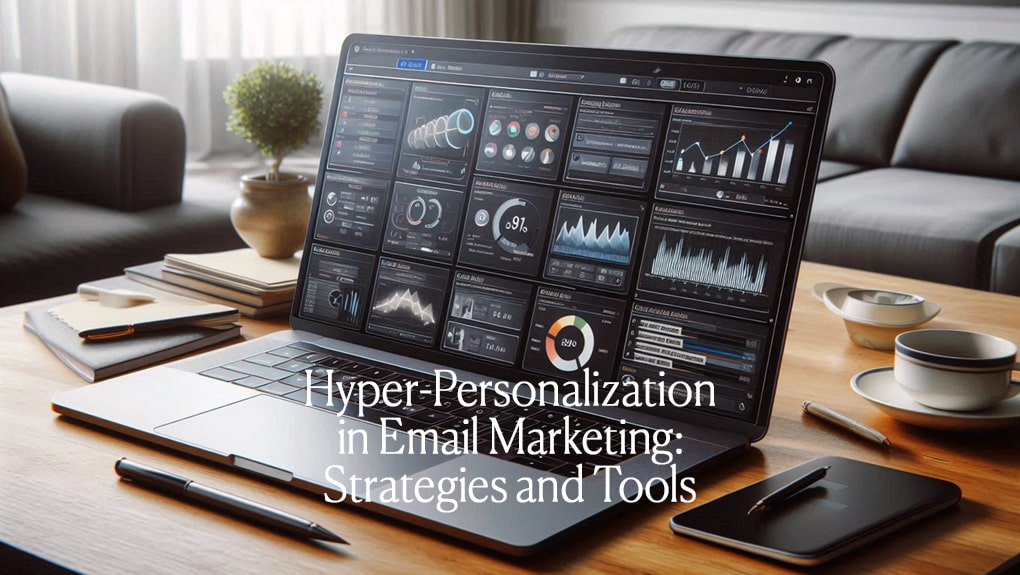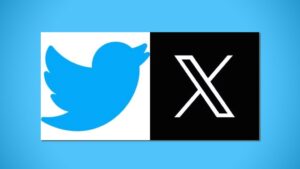|
Getting your Trinity Audio player ready...
|

As businesses strive to build stronger relationships with their customers, email marketing remains one of the most powerful tools for engaging with customers. However, the traditional one-size-fits-all approach is no longer effective. Consumers today expect tailored experiences that resonate with their unique preferences and behaviors. This demand has given rise to hyper-personalization in email marketing, where businesses leverage advanced tools and strategies to deliver highly customized and relevant content to each recipient. This article delves into the latest tools and strategies for achieving hyper-personalization in email marketing campaigns.
Understanding Hyper-Personalization
What is Hyper-Personalization?
Hyper-personalization goes beyond simple personalization tactics like addressing the recipient by their first name. It involves using real-time data and advanced analytics to create highly relevant and individualized content for each subscriber. This approach takes into account various data points, including browsing behavior, purchase history, demographic information, and engagement patterns, to craft messages that speak directly to the recipient’s needs and interests.
Why Hyper-Personalization Matters
- Enhanced Customer Experience: Personalized content makes customers feel valued and understood, leading to higher satisfaction and loyalty.
- Improved Engagement: Tailored emails are more likely to be opened, read, and acted upon, resulting in better engagement rates.
- Higher Conversion Rates: When customers receive relevant offers and recommendations, they are more likely to make a purchase.
- Reduced Churn: Personalized communication helps in building stronger relationships with customers, reducing the likelihood of them switching to competitors.
Key Strategies for Hyper-Personalization
1. Data Collection and Analysis
To achieve hyper-personalization, it is crucial to gather and analyze as much relevant data as possible. This data serves as the foundation for creating personalized content.
Data Sources
- Website Behavior: Track how users interact with your website, including pages visited, products viewed, and time spent on each page.
- Purchase History: Analyze past purchases to understand customer preferences and buying patterns.
- Email Engagement: Monitor which emails are opened, clicked, and ignored to gauge recipient interests.
- Demographic Information: Collect data on age, gender, location, and other demographic factors to segment your audience effectively.
- Social Media Activity: Integrate social media data to gain insights into customer interests and behaviors.
Tools for Data Collection and Analysis
- Google Analytics: Provides comprehensive insights into website traffic and user behavior.
- Customer Relationship Management (CRM) Systems: Tools like Salesforce and HubSpot help manage and analyze customer data.
- Email Marketing Platforms: Solutions like Mailchimp and Campaign Monitor offer built-in analytics to track email performance.
- Data Management Platforms (DMPs): Platforms like BlueKai and Lotame help collect and manage large volumes of customer data from various sources.
2. Segmentation
Segmentation is the process of dividing your email list into smaller groups based on specific criteria. This allows you to send targeted messages to each segment, increasing the relevance and effectiveness of your campaigns.
Common Segmentation Criteria
- Demographic Segmentation: Based on age, gender, income, location, etc.
- Behavioral Segmentation: Based on past purchases, browsing history, and engagement with previous emails.
- Psychographic Segmentation: Based on lifestyle, interests, and values.
- Transactional Segmentation: Based on purchase frequency, average order value, and customer lifetime value.
Tools for Segmentation
- ActiveCampaign: Offers advanced segmentation capabilities based on various criteria.
- Klaviyo: Provides powerful segmentation tools, particularly for e-commerce businesses.
- Drip: A CRM and email marketing platform with robust segmentation features.
3. Dynamic Content
Dynamic content allows you to create email templates that automatically adapt based on the recipient’s data. This ensures that each subscriber receives content that is highly relevant to them.
Examples of Dynamic Content
- Product Recommendations: Suggest products based on past purchases or browsing behavior.
- Personalized Offers: Provide discounts or promotions tailored to the recipient’s interests.
- Location-Based Content: Customize content based on the recipient’s geographic location.
Tools for Dynamic Content
- Sailthru: Offers sophisticated personalization and dynamic content capabilities.
- Iterable: Provides tools for creating personalized and dynamic email content.
- Fresh Relevance: Specializes in real-time personalization and dynamic content for email campaigns.
4. Predictive Analytics
Predictive analytics uses machine learning and statistical algorithms to analyze historical data and predict future outcomes. In email marketing, predictive analytics can help you anticipate customer needs and tailor your content accordingly.
Applications of Predictive Analytics
- Predicting Purchase Behavior: Identify which customers are most likely to make a purchase and target them with relevant offers.
- Churn Prediction: Detect signs of potential churn and send re-engagement emails to retain customers.
- Optimal Send Time: Determine the best time to send emails to maximize open and click-through rates.
Tools for Predictive Analytics
- Adobe Analytics: Provides predictive analytics capabilities to forecast customer behavior.
- IBM Watson Marketing: Offers AI-powered tools for predictive analytics in marketing.
- Pyramid Analytics: A comprehensive platform for advanced analytics and business intelligence.
5. Automation
Email automation allows you to send timely and relevant messages to your subscribers based on their actions or predefined triggers. This ensures that your emails are always timely and personalized.
Examples of Email Automation
- Welcome Series: Send a series of welcome emails to new subscribers, introducing them to your brand and products.
- Abandoned Cart Emails: Remind customers of items left in their shopping cart and encourage them to complete the purchase.
- Re-Engagement Campaigns: Target inactive subscribers with personalized content to rekindle their interest.
Tools for Email Automation
- Marketo: A powerful marketing automation platform with advanced email automation features.
- Pardot: Salesforce’s marketing automation solution, ideal for B2B email marketing.
- ActiveCampaign: Combines email marketing and automation with CRM capabilities.
6. Artificial Intelligence and Machine Learning
AI and machine learning are revolutionizing email marketing by enabling hyper-personalization at scale. These technologies can analyze vast amounts of data, identify patterns, and make real-time decisions to optimize email content and delivery.
Applications of AI and Machine Learning
- Content Optimization: Use AI to determine the most effective subject lines, images, and copy for each recipient.
- Customer Segmentation: Employ machine learning algorithms to segment your audience based on complex patterns in the data.
- Predictive Recommendations: Leverage AI to provide personalized product recommendations and offers.
Tools for AI and Machine Learning
- Persado: Uses AI to generate highly effective email content and subject lines.
- Emarsys: An omnichannel customer engagement platform with AI-driven personalization features.
- Phrasee: Utilizes AI to optimize email subject lines and copy for better engagement.
7. A/B Testing and Optimization
A/B testing is a method of comparing two versions of an email to determine which one performs better. This helps in optimizing your email campaigns for maximum effectiveness.
Elements to A/B Test
- Subject Lines: Test different subject lines to see which one generates higher open rates.
- Email Copy: Compare different versions of your email content to find the most engaging copy.
- Call to Action (CTA): Experiment with different CTAs to determine which one drives more clicks and conversions.
- Images and Design: Test various images and design layouts to see which ones resonate best with your audience.
Tools for A/B Testing
- Optimizely: A comprehensive platform for A/B testing and experimentation.
- VWO: Provides tools for A/B testing, multivariate testing, and conversion optimization.
- Mailchimp: Offers built-in A/B testing features for email campaigns.
Case Studies: Successful Hyper-Personalization in Email Marketing
1. Amazon
Amazon is a prime example of a company that excels at hyper-personalization. By leveraging vast amounts of customer data, Amazon sends highly personalized product recommendations and offers to its subscribers. Their emails often include dynamic content such as recently viewed items, personalized discounts, and tailored product suggestions based on the recipient’s browsing and purchase history.
2. Netflix
Netflix uses predictive analytics and machine learning to deliver personalized content recommendations to its users. Their email campaigns often feature personalized recommendations based on the recipient’s viewing history and preferences. By doing so, Netflix keeps users engaged and encourages them to explore new content on the platform.
3. Spotify
Spotify’s personalized email campaigns are a testament to the power of hyper-personalization. They send personalized playlists, concert recommendations, and updates based on the recipient’s listening habits. By providing content that resonates with each user, Spotify enhances the overall user experience and drives higher engagement.
Future Trends in Hyper-Personalization
As technology continues to evolve, the future of hyper-personalization in email marketing looks promising. Here are some trends to watch out for:
1. Real-Time Personalization
Real-time personalization will become increasingly important as consumers expect immediate and relevant content. Advances in AI and machine learning will enable marketers to deliver real-time personalized experiences, adapting email content based on the recipient’s current context and behavior.
2. Enhanced Privacy and Data Security
With the growing emphasis on data privacy and security, businesses will need to adopt transparent data collection practices and ensure compliance with regulations like GDPR and CCPA. Balancing personalization with privacy will be crucial for maintaining customer trust.
3. Omnichannel Personalization
Future email marketing campaigns will seamlessly integrate with other channels to provide a cohesive and personalized customer experience. This will involve leveraging data from various touchpoints, including social media, mobile apps, and in-store interactions, to create a unified and personalized communication strategy.
4. Voice-Activated Email Marketing
As voice-activated devices like smart speakers become more prevalent, email marketers will explore ways to optimize their content for voice interactions. This could involve creating voice-friendly email content and leveraging voice search data to enhance personalization efforts.
To Make the Long Story Short
Hyper-personalization in email marketing is no longer a luxury but a necessity for businesses looking to stay competitive in the digital age. By leveraging advanced tools and strategies, marketers can create highly relevant and engaging email campaigns that resonate with each recipient on a personal level. From data collection and analysis to AI-driven personalization and real-time content optimization, the possibilities are endless. As technology continues to advance, the future of hyper-personalization in email marketing holds immense potential for delivering exceptional customer experiences and driving business growth.




